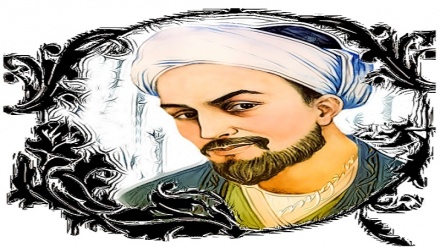Iranian notables, sources of global honor (99)
Last week, we spoke of Amir Ali Shirnavai, the prominent thinker, poet, literary figure, author, and politician of 9th Century AH. He is a global figure who rendered valuable services in different domains and left behind valuable works. Today, we continue to introduce this prominent Iranian figure of 9th Century AH.
It was said that the period of rule of Timurid Dynasty was one of the most glorious eras of Iran. In this phase in time, due to the significant support of this dynasty for the cultural and artistic current, a brilliant period in the history of Iran’s culture and civilization took shape. This phase in time was particularly characterized by the empowerment of cultural elites.
Amir Ali Shirnavai; the knowledgeable and art-loving vizier of Sultan Hussein Baiqra is one of these prominent figures.
Born in the city of Herat on February 9, 1441, in a virtuous and knowledgeable family, he completed his preliminary studies in his hometown. Amir’s family was forced to migrate to Mashhad and later to Samarqand as the consequence of power struggles in Herat. Throughout his residence in Samarqand, Amir completed his studies. Upon the instatement of sultan Hussein Baiqra; Amir returned to Herat, and succeeding in rendering valuable services to people. He showed prudence, spiritual growth, and prominent characteristic traits throughout his ministerial post. In this phase in time, artists headed toward Sultan Hussein Baiqra’s royal court, enjoying Amir’s support, and creating eternal artistic and literary works.
Meanwhile, the resentment of rivals, enemies, and courtiers toward Amir, whom they believed prevented them from fulfillment of their excessive demands, led Amir to tender his resignation. However, the courtiers who envied Amir’s status, in continuation of their enmities toward Amir, asked Sultan Hussein Baiqra to hand over the rule of the important Astarabad Province to Amir. In this manner, they succeeded in forcing Amir to leave Herat. Astarabad was one of the vast, developed regions of Iran in that era. Amir went to this region in 829 AH, treating people justly throughout his rule, and manifesting his countless merits. In this phase in time; Ulema, people, and members of different guilds lived in peace and tranquility under Amir’s just rule. Meanwhile, after two years, and upon the insistence of
Amir, Sultan Hussein Baiqra summoned Amir to the capital. However, this was a belated development, and Amir was going through the waning years of his life.
In the year 906 AH, Amir suffered a heart attack and passed away.
Amir’s cultural achievements are highly glittering. He was a competent writer, a tasteful poet, and a skilled artist. His compilations in Turkish literature promoted Turkish to a literary language. This highly capable thinker, author, and poet, throughout thirty years in power, founded a huge and important cultural and artistic current. Amir turned Herat into one of the most important cultural hubs of his era. He left a major impact on this cultural and artistic current in a number of ways. For instance, he constructed several buildings and works with cultural and scientific goals, including the construction of educational establishments such as schools and mosques, and compilation of books in Turkish and Farsi languages, in addition to his relentless material and spiritual support for Ulema and artists. He provided a number of welfare and educational facilities, turning Herat’s royal court into a hub for thinkers, and artists, so that they would be able to produce scientific and artistic works.
In addition to his ministerial post, Amir was also engaged in literary activities, and render of public services. Due to his immense interest in development projects, he spent his entire life, renovating and repairing several mosques, schools, guest houses, monasteries, pavements, bridges, and cemeteries.
Amir is one of the founders of the ancient courtyard of the Holy Shrine of the 8th Infallible Imam of Prophet of Islam’s Household, Imam Reza (Peace be upon him), which was constructed in 872 AH. Another half of this courtyard was constructed in the year 1010 AH, upon the instruction of the Safavid King, Shah Abbas.
Amir was a man of letter, and art-lover, and a poet, who composed poetry in Farsi and Turkish languages, both. Throughout his term in office, Herat turned into a hub for poets, calligraphers, art-lovers, musicians, and story-tellers.
He never treated the community’s elite like a political ruler. If we study Amir’s relations with figures such as Jaami, Behzad, and Vaez Kashefi, who were the leading poets, artists, and mystics of that era, we realize that these figures progressed and advanced thanks to Amir’s relentless support for them.
Amir also maintained an important library, which included valuable books and rare copies of the works of prominent calligraphers. In his term in office, precious and beautiful copies of calligraphy were written by tasteful calligraphers.
MR/ME


